
First and Only Weekly Online Fanzine Devoted to the Life and Works of Edgar Rice Burroughs Since 1996 ~ Over 10,000 Webpages and Webzines in Archive |

First and Only Weekly Online Fanzine Devoted to the Life and Works of Edgar Rice Burroughs Since 1996 ~ Over 10,000 Webpages and Webzines in Archive |
Kipling and ERB?
An ERBapa #68 Reprint by
Bob Woodley







Did Kipling’s Jungle Books markedly influence ERB’s creation of Tarzan? No. Certainly not in any sense that ERB’s Tarzan was in any important manner based upon this character, or that his books about Tarzan were influenced much, if at all, by Kipling’s writings.
I had never read the JungleBooks, though the Classics Illustrated version is perhaps my favorite comic book of all time. I had read some of The Big Swingers, by Robert W. Fenton Prentice-Hall, Inc. (1967), however, and one can hardly read his discussion of passages relating to Mowgli as he compares them to passages about Tarzan without coming away with the idea that ERB was heavily influenced by this character when he created Tarzan and his jungle habitat.
This didn’t trouble me in the least. Most writers borrow from writing and ideas they admire when they create their own fiction. In fact, I was looking forward to meeting Mowgli and Kipling’s other fauna and flora; hoping to see the seeds of the ape-man residing within these pages. Recently I tried out my new Rocket e-book with the Jungle Book and the Second Jungle Book.
What I found, however, was mainly nothing. Nothing but childrens’ stories. Nothing which would form the clay to create a character such as Tarzan of the Apes.
I then revisited Fenton’s Book, since I had remembered him setting forth several passages. They are still there. However, it is apparent that Fenton’s objective was to search carefully through the Jungle Books to locate certain types of passages, and then to compare them with passages from Tarzan, in an effort to “prove” his contentions. None of these passages are set forth in the context of the story, nor does he even discuss the vast differences between the writing, the themes, the characters themselves, or anything else which would tend to blunt his contentions.
As a matter of fact, just about everything in these books is so different that if one were to contend that ERB was influenced by Kipling’s Jungle Books when he created Tarzan, it would be the contention that ERB wrote stories which were almost wholly contrary to those of Kipling.
I wouldn’t quibble with the idea that ERB had read the Jungle Books might have been taken by a particular description or bit of prose now and then, as all writers do. However, when one examines the contentions of Fenton in view of the passages as taken in the context of the books themselves, we can see how illusory are most of these arguments. Fenton’s contentions are indicative of a man who has little understanding of Burroughs’ Tarzan, and/or who had blinders on when he read these books, so as to not let the facts get in the way of what he was attempting to establish.
Let’s examine his contentions and the passages he discusses:
As he stood there in the red light of the oil lamp, tall and beautiful, his long black hair sweeping over his shoulders, the knife swinging at his neck, and his head crowned with a wreath of white jasmine, me might easily have been mistaken for some wild god of a jungle legend. (The Jungle Book, 1894)Fenton writes:The young lord Greystoke was indeed a strange and warlike figure, his mass of black hair falling to his shoulders.......with the noble poise of his handsome head upon those broad shoulders, and the fire of life and intelligence in those fine, clear eyes, he might readily have typified some demigod of a wild and warlike bygone people of his ancient forest. (TOA, 1912)
“At seventeen years old he had the strength and growth far beyond his age”Well, in fact the similarities are almost nonexistent; and these passages represent more that is coincidental than anything else.He could swing by one hand from a top branch for half an hour at a time.....he could stop a young buck in mid-gallop and throw him sideways by the head. He could ever jerk over the big, wild blue boars that lived in the Marshes of the North. The Jungle People who used to fear him for his wits feared him now for his strength, and when he moved quietly on his own affairs the mere whisper of his coming cleared the wood-paths. And yet the look in his eyes was always gentle.
“Tarzan at seventeen! But — is this Tarzan? It looks like him. It even sounds like him — especially when he calls his faithful jungle companion “with a long low howl that rose and fell”. But responding to the call is Bagheera, the Black Panther, and not Tantor, the elephant, and the seventeen year old is not Burroughs Tarzan the ape-man, but Rudyard Kipling’s Mowgli, the man-cub.”
“The striking similarities between Mowgli and Tarzan are many.......”
Fenton seems to think it important that both Tarzan and Mowgli have long, black hair, and carry a knife. In fact, nearly all ERB’s heroes have black hair. The proper question to ask is: “If it weren’t for these passages about Mowgli, would Tarzan be different?”
The clear answer is “no.” Unlike Kipling’s creation/environment, ERB created Tarzan as a purportedly “real”, character. This is the main focus of the books, unlike the child’s jungle fantasyland which Mowgli inhabits.
Tarzan has long hair because a man in the wilderness would almost certainly have long hair. He has black hair because ERB likes black hair on his heroes. He has a knife because he enables him to survive in a somewhat acceptable manner when he fights against vastly superior strength and natural weapons. If Mowgli had sported blonde or red hair, or short hair, and/or had gone without a knife, Tarzan would ERB’s Tarzan, as we’ve always known him. If Mowgli had been ugly or misshapen, Tarzan of the Apes would have been as handsome as always. ERB rejects so much of what is Kipling’s Mowgli that when you consider the few parallels, they are meaningless and coincidental.
Both writers created an attractive, somewhat realistic-looking characters, given their environments. Strong handsome young men with long dark hair. Given the story ERB desired to tell, his physical description of Tarzan would have been just as it is, Mowgli or no Mowgli. I see nothing in these passages but coincidence.
The passage about a “wild god of a jungle legend” etc., on the other hand, is certainly one which is worthy of borrowing to a degree. Whether ERB borrowed the concept from Kipling; or whether they both borrowed it from somewhere else; this is the type of phraseology which would certainly appeal to a writer when first encountered. This is pure metaphorical description, however, and has little to do with the characters.
With respect to the third passage Fenton sets forth as “proof” of these similarities, one wonders what he is talking about. Obviously a man raised in such an environment would be adept at hunting, as a matter of “reality”. Kipling’s referral to Mowgli’s arboreal strength is perhaps one of two or three references to such feats in the entire Jungle Book saga. He in fact disdains the world of the Bandar-log, and the creatures themselves.
Tarzan’s arboreal skills, however, are a large part of his attraction and the world of the Mangani. Not only did ERB create his main characters as primates whose arboreal skills are wondrous, but he made them interesting and fairly believable creatures. Kipling scorns the primates, ignoring the fact that they are the most intelligent of the jungle creatures, and he also scorns the world they inhabit. They inhabit this “upper/separate” world, and the other forest creatures ridicule them in the various silly languages Kipling utilizes for wolves and snakes and bears and whatever. ERB’s tactic is wholly contrary. He recognizes that only the primates might truly communicate in some very rudimentary fashion, and that the world of the terraces blends with and often dominates the world beneath.
ERB may have enjoyed the very few passages about tree-travel in the Jungle Books, but they are so scant that unless one had some evidence that he actually created Tarzan and the Mangani as a result of these few passages, they are meaningless; and the fact that he created his magnificent Mangani wholly contrary to the mean-spirited bandar-log is pretty inconsistent with such an assertion. ERB is such an imaginative writer that it’s much more likely that; once he had decided upon apes (a logical decision), his arboreal concepts were wholly his own.
Both Tarzan and Mowgli utilize “wits” as well as “strength”, but in wholly different manners. Mowgli’s “wits” often concern his ability to out-talk other animals, or to look them in the eye till their eyes drop; or to make plans with wolves and others. Silly stuff which has no relationship to the mental development of the growing Tarzan, or his skills, and the phrase:
and when he moved quietly on his own affairs the mere whisper of his coming cleared the wood-paths. And yet the look in his eyes was always gentle.has nothing to do with Tarzan of the Apes in any manner. Tarzan’s eyes may have been gentle once or twice in his life, when he was not with Jane; but that’s about it. Nor did Numa or Buto or Sabor clear the area just because the ape-man was on the way. They were beasts, and certainly not afraid of any man.Fenton’s subsequent comments are similarly unsupported. Where in the world does he get the idea that Tarzan of the Apes calls Tantor, his “faithful jungle companion”, with a “long low howl which rose and fell”? Perhaps he’s seen a few too many Tarzan movies and not read enough books. Tantor is no faithful jungle companion. He is a species. I do recall that in at least one book Tarzan called to Tantor while imprisoned in a hut or tent; and Tantor did rescue him. This was in a later book, however, and had nothing to do with the creation of Tarzan; nor is the ape-man’s odd relationship with elephants anything remotely like the silly friendship Mowgli has with Bagheera, the philosophical panther.
It was Korak, not Tarzan, who first called to Tantor. Tarzan tried it in Jewels of Opar, but unfortunately called to a Tantor in Must, who then tried to do him in, apparently forgetting that they were faithful jungle companions.
Although Tarzan’s odd friendship with Tantor is set forth in TOA, I see nothing which would liken it to anything in the Jungle Books; and in Return, Tarzan actually hunts and kills Tantor, in the company of the Waziri.
Later in the chapter, Fenton compares the disdain both Mowgli and Tarzan have for man. This is simply a reflection of the two writers’ views on some of mankind’s values and depredations, and has nothing to do with ERB modeling Tarzan after Mowgli. Nothing. They reflect realities both writers acknowledged in their works, and a theme which ERB wrote a great deal about in many of his works.
Fenton reiterates that both characters were handsome; that both went to “find their fellows”; that both enjoyed tempting fate; and had languages/words for their jungle folk (kaa/histah, Hathi/Tantor, etc.); and apparently contends this is evidence of Kipling’s influence, when in fact most heroes are handsome; most heroes are brave and tempt danger; and most fantasy involves names. Fiction has always been thus. Nor did Tarzan go to “find his fellows”. His fellows found him. Obviously hero and mankind (and womankind) would meet in the context of this story. The handling of these interactions and themes presented is wholly different, however.
He contends that both writers utilize “similar” descriptions for deserted cities and ancient civilizations as additional “proof”. Well, ERB’s imagination when it came to lost/ancient cities and civilizations was certainly not dependent upon Kipling, though the romantic concept of such places was something both writers (and most adventure writers) have enjoyed for centuries; and it’s a bit insulting to think that ERB would have “copied” a Kipling description when ERB had such a marvelous imagination and vocabulary. Most dead cities by most good writers tend to have some similarities. If I were to create one in a story, it would likely have similarities to Kipling’s or ERB’s or both, even if I hadn’t read either author for many years. Such similarities are meaningless.
Moreover, the passages Fenton sets forth are nearly the sum total of any passages which have similarities to anything Burroughs wrote. They are in fact so rare that although I was looking for similarities when I recently read these books, they were virtually lost in the context of the books. Many of them are from the later parts of the Second Jungle Book, long after Mowgli has grown up and had most of his adventures.
Apart from these few passages, the respective books have no similarities whatsoever. Kipling’s jungle is full of laws and rules and politics, with animal councils and votes and other childrens’ nonsense.
ERB’s jungle is a savage place ruled by self-interest and survival.
Kipling’s depiction of the tiger as a cowardly beast is wholly contrary to any concept ERB had of the magnificent carnivores, and the actions and motivations of Kipling’s creatures have little or nothing to do with reality. Pythons can travel as fast as panthers. Jackals are full of knowledge and mischief. Wolves trade verbal barbs with Tigers.
ERB created a jungle and a hero which are acceptable and believable in an adult story, with a bit of faith. He was very careful to avoid “humanizing” his creatures. Even the mangani are brutal, slow-witted, savage beasts.
The plots, descriptions, themes, characters, beasts, and other aspects of these books are so markedly different that any contention that Tarzan of the Apes was influenced to any measurable degree by Kipling is simply not supported by the books themselves. The concept of Mowgli himself might have been an influence, along with other feral children in fictional history; and the concept that a book about a feral child was published and made money might have been an even larger influence; but these influences would have existed whether or not ERB actually read the Kipling stories. Kipling’s prose, however, certainly had nothing to do with ERB’s Tarzan of the Apes; as I read the books; and I find Fenton’s assertions comparable to those of a researcher who decides to prove something with statistics and then finds scattered statistics which when taken out of context seem to establish facts and inferences; but which, when examined in the light of logic and context, establish virtually nothing of substance.
I do tend to be skeptical of those who purport to tell me things which I can decide for myself; and often find, as I did in this instance, that such skepticism is justified. In my view Fenton's inferences go far beyond anything which is justified by the specific prose which he sets forth, and the misinformation is compounded by his failure to acknowlege the vast differences in nearly every aspect of the prose in these respective books.

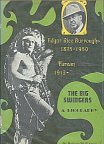
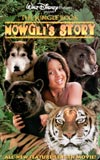
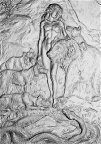
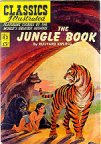

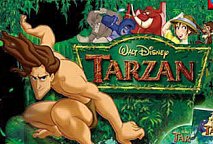
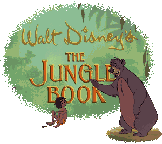
|
Lands of Adventure is found at www.geocities.com/danestargems/ |
The List With No Rules is found at THB@yahoogroups.com |
|
ERBzine 0099 TARAK'S FARSIDE CHAT: Disney Tarzan Preview Review ERBzine 0137Tarzan and the Forbidden City Review ERBzine 0191 DD99: Thanks for the Memories by Tarak ERBzine 0418 Tarak and the Jewels of Louisville ERBzine 0419 Tarak and a Princess of Stories ERBzine 0420 Tarzan of the Apes in All-Story pulp magazine ERBzine 0316 Tarak Poetry in Motes & Quotes ERBzine 0060: The First Time ERBzine 0685 Tarzan of the Apes: A Personal Journey Through 24 Volumes ERBzine 0708: Tarak's ERB in Verse ERBzine 0709: Kipling and ERB ERBzine 0710: The Mucker: An ERBapa Reprint ERBzine 0707: Dum and Dummer 2002 |
![]()
![]()
Volume
0709

WEBJED:
BILL HILLMAN
Visit
our thousands of other sites at:
BILL
AND SUE-ON HILLMAN ECLECTIC STUDIO
All
ERB Images© and Tarzan® are Copyright ERB, Inc.- All Rights Reserved.
All
Original Work © 1996-2002/2010 by Bill Hillman and/or Contributing
Authors/Owners